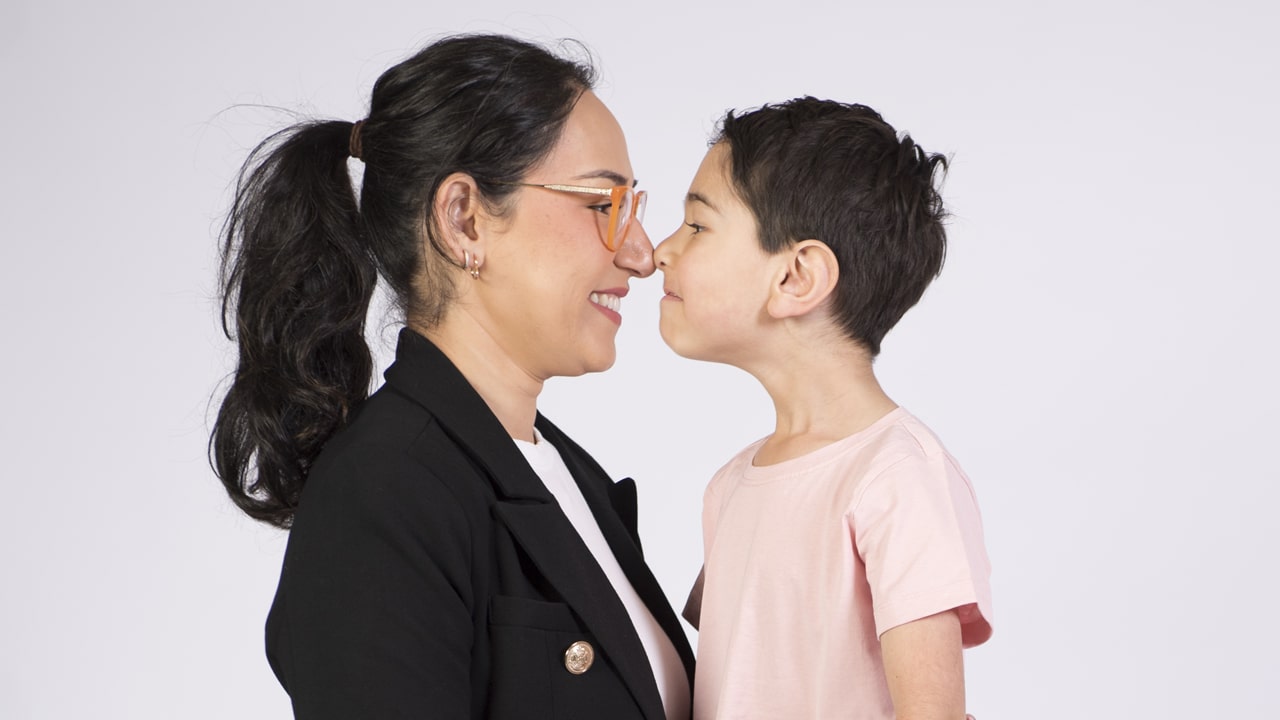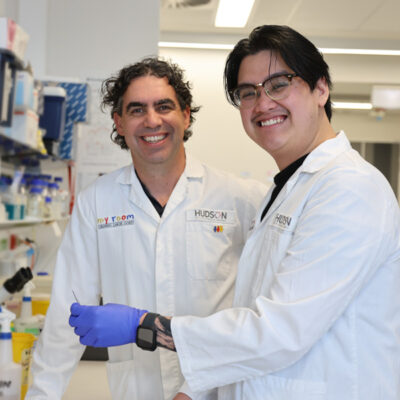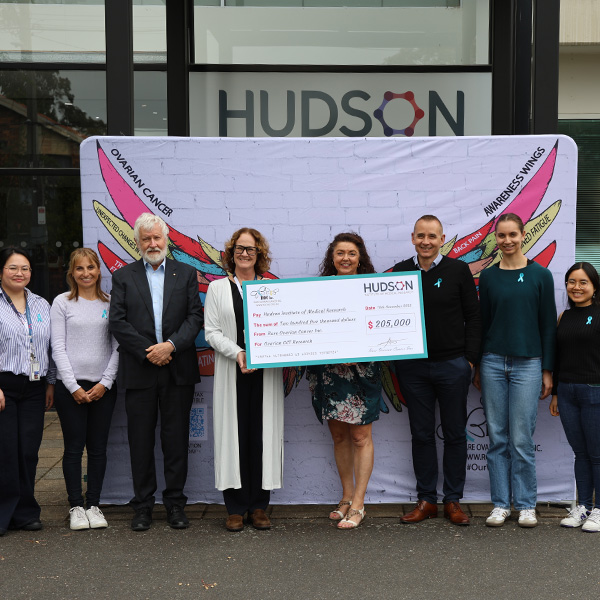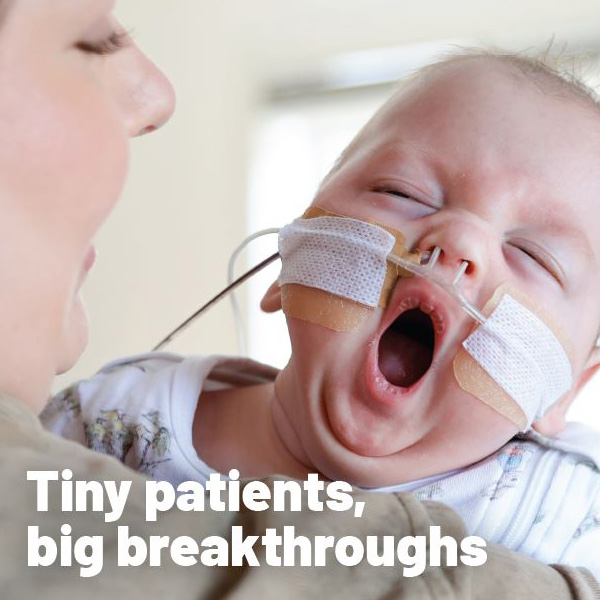Conquering childhood cancer | Eli’s story
By Rob Clancy, staff writer

Childhood cancer facts
- Cancer is the leading disease-related cause of death among Australian children.
- One in five children diagnosed with cancer will not survive.
- For those who do, the majority will suffer long-term disability from the toxic treatments.
- Despite decades of research, survival rates from some cancers have hardly improved.
When it comes to treating disease, the medical profession is increasingly recognising that children are not just small adults: their bodies behave differently. Sadly, paediatric oncologists are often faced with little option but to treat childhood cancers with repurposed drugs developed for adult cancers. These treatments are frequently ineffective and toxic. Mum, Nelly shares Eli’s story, and two leading scientists share how their research is making a difference for children with cancer.
ELI’S STORY | 501 days of chemotherapy
Even after watching her infant son go through such an ordeal, Nelly sees the bright side.
“It’s been a big journey, but the best part is that he doesn’t remember it,” she said.
Eli was just 16 months old when he went from being a happy, healthy boy to beginning chemo in the space of a week.
Discomfort on Monday, a trip to emergency on Thursday after discovering a lump, and by Sunday he’d been diagnosed and booked in to start treatment the following day.
“When they were doing the ultrasound I had this terrible sense of dread, but you never expect to hear someone tell you your child has cancer,” Nelly said.
Eli had an embryonal rhabdomyosarcoma (soft tissue cancer) in his bladder, and the treatment was harrowing, but three-and-a-half years later he remains cancer-free, with plenty of life ahead of him.
Despite so much medical intervention, his development is now back where it should be, with few signs of the ordeal he went through except for the regular six-monthly checks.
Nelly knows who to thank for it:
“Medical professionals – scientists like Ron and Jason – they’re all just superheroes in my eyes. It’s so personal for me, so if my story and our journey can help spread the word and attract extra funding, I will work my hardest and scream ‘more funding, please”.
Targeted childhood cancer treatments
Next Generation Precision Medicine program
Rarity is a virtue in some fields. Unfortunately, that’s anything but true when it comes to childhood cancers.

Not only are they often uneconomic for drug companies to pour research dollars into, but tissue samples can be hard to come by.
As Head of the Centre for Cancer Research, Professor Ron Firestein wants to change all that with the Next Generation Precision Medicine program.
The aim is to significantly improve treatment for childhood cancer patients with the greatest unmet clinical need – those diagnosed with brain cancers and solid tumours.
Prof Firestein’s four-pronged approach to the problem includes going beyond genomic sequencing to what’s called multi-omics, which studies the genome, transcriptome, epigenome and proteome of cancer cells.
Another crucial aspect of this program is the creation of the Childhood Cancer Model Atlas (CCMA) – a tissue bank where samples of actual cancers are stored and reproduced, to be analysed and tested against potential therapies.
The CCMA is also the largest collection of high-risk paediatric solid tumour cell lines in the world, and for Prof Firestein and cancer researchers everywhere, it is a goldmine.
Drawing on collaborations with 37 hospitals and medical research centres around the world, the CCMA also includes a searchable data portal to foster the collaborative and hypothesis-driven research needed to catalyse clinical translation.
Smarter cancer treatments for children
Sarcoma program
It’s not just the number of children who succumb to cancer that drives Dr Jason Cain to pursue his research; it’s also the ones who survive.

“Childhood cancer is a devastating diagnosis for the patient and family,” Dr Cain said.
“The current treatments for childhood cancer (surgery, chemotherapy and radiotherapy) have remained unchanged for decades. Not all children respond to these therapies, and even those who do are often left with permanent side effects.”
“Many survivors of childhood cancer are left with debilitating long-term side effects of their treatments. We need to do better.” Dr Jason Cain
It is those facts that spur Dr Cain on to understand what causes childhood cancers, then convert that knowledge into a targeted search for new treatments – not just to improve survival rates but also the patient’s quality of life.
Dr Cain leads the Sarcoma program, focused on finding molecular signatures that predict a child’s response to therapy, their risk of metastasis and their potential survival outcomes.
His goal is to determine which patients are likely to respond to which therapies, so ineffective treatments and their side effects can be avoided.
“No one treatment is going to be effective for all patients, even with the same cancer diagnosis,” he said.
“There is a need to identify several different therapies that can be used in combination to treat patients.”
“Our findings will enable other researchers in the childhood cancer community to accelerate their own research and discoveries,” Dr Cain said.
In this article
About Hudson Institute
Hudson Institute’ s research programs deliver in three areas of medical need – inflammation, cancer, women’s and newborn health. More
Hudson News
Get the inside view on discoveries and patient stories
“Thank you Hudson Institute researchers. Your work brings such hope to all women with ovarian cancer knowing that potentially women in the future won't have to go through what we have!”






